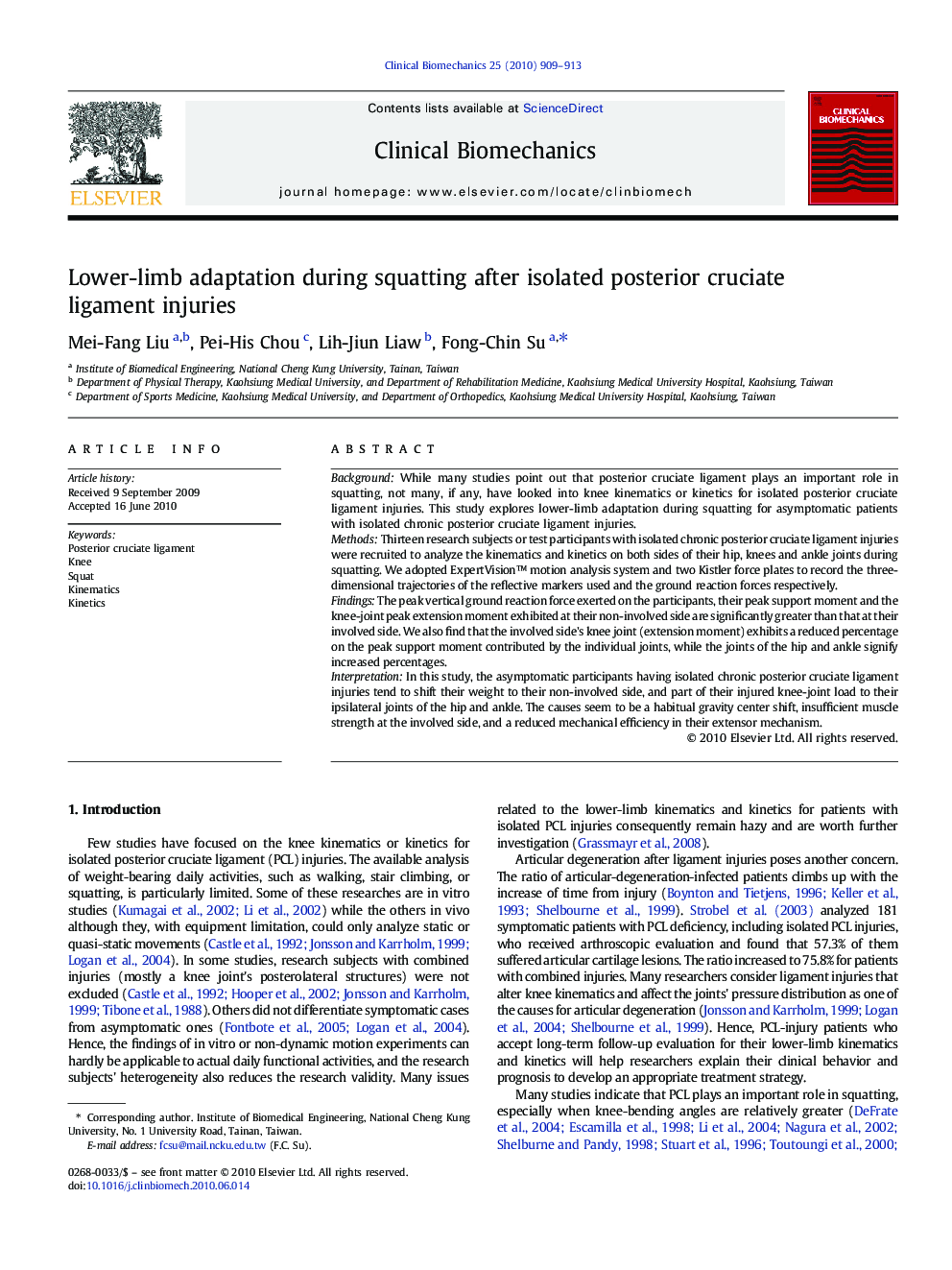| Article ID | Journal | Published Year | Pages | File Type |
|---|---|---|---|---|
| 4050986 | Clinical Biomechanics | 2010 | 5 Pages |
BackgroundWhile many studies point out that posterior cruciate ligament plays an important role in squatting, not many, if any, have looked into knee kinematics or kinetics for isolated posterior cruciate ligament injuries. This study explores lower-limb adaptation during squatting for asymptomatic patients with isolated chronic posterior cruciate ligament injuries.MethodsThirteen research subjects or test participants with isolated chronic posterior cruciate ligament injuries were recruited to analyze the kinematics and kinetics on both sides of their hip, knees and ankle joints during squatting. We adopted ExpertVision™ motion analysis system and two Kistler force plates to record the three-dimensional trajectories of the reflective markers used and the ground reaction forces respectively.FindingsThe peak vertical ground reaction force exerted on the participants, their peak support moment and the knee-joint peak extension moment exhibited at their non-involved side are significantly greater than that at their involved side. We also find that the involved side's knee joint (extension moment) exhibits a reduced percentage on the peak support moment contributed by the individual joints, while the joints of the hip and ankle signify increased percentages.InterpretationIn this study, the asymptomatic participants having isolated chronic posterior cruciate ligament injuries tend to shift their weight to their non-involved side, and part of their injured knee-joint load to their ipsilateral joints of the hip and ankle. The causes seem to be a habitual gravity center shift, insufficient muscle strength at the involved side, and a reduced mechanical efficiency in their extensor mechanism.
